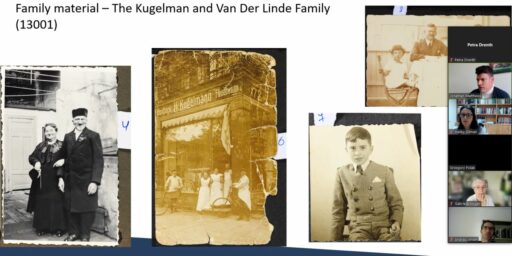Watch the Video of the EHRI Online Lecture “Methodological Challenges of Photography Collections and Cataloguing”

With Jonathan Matthews, former Head of Yad Vashem’s Photo Archives
“It was a thorough and engaging exploration of Holocaust photo archives. Jonathan was excellent” – Simon Edwards, PhD Student
Watch the video of the Online Lecture
On April 9, the European Holocaust Research Infrastructure and partner Yad Vashem gave a unique online lecture, discussing and dissecting ongoing and new issues within the world of Holocaust photography collections. The invitation was open, and the lecture was aimed at (photo) archivists, historians or researchers working with photographs. In this accessible and frank discussion, Jonathan Matthews addressed many of the central and critical methodological challenges faced by archivists and Holocaust experts today.
Photographs provide unique insights into the history of the Holocaust and have proven to be a critical source for both research and educational purposes. Managing a collection of visual material on the Holocaust, however, presents various methodological challenges. Some of the central issues include: organization of the materials, handling of digital material, and how the interpretations and growing research concerning photographic materials result in revelations that may change the manner in which a photograph is contextualized by the archivist. In addition, the significant advancements of artificial intelligence create new challenges in ensuring the authenticity of visual material.
The collection of historical photographs at Yad Vashem is the largest in the world dealing with the Holocaust. Jonathan Matthews gained vast experiences in managing this collection of more than 500,000 photos which covers prewar Jewish life, the events of the Holocaust, and the immediate aftermath, such as life in the DP camps and postwar emigration. As well as giving a vibrant overview of the history of the Yad Vashem photographic archive, Matthews shared his knowledge, insights and experience with a sizable audience of archivists, students and various professionals across historical research and digital humanities. If you were unable to attend, you can now watch the lecture below:
